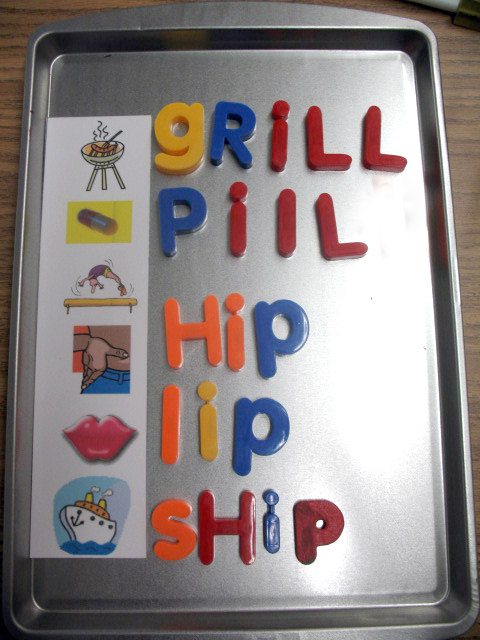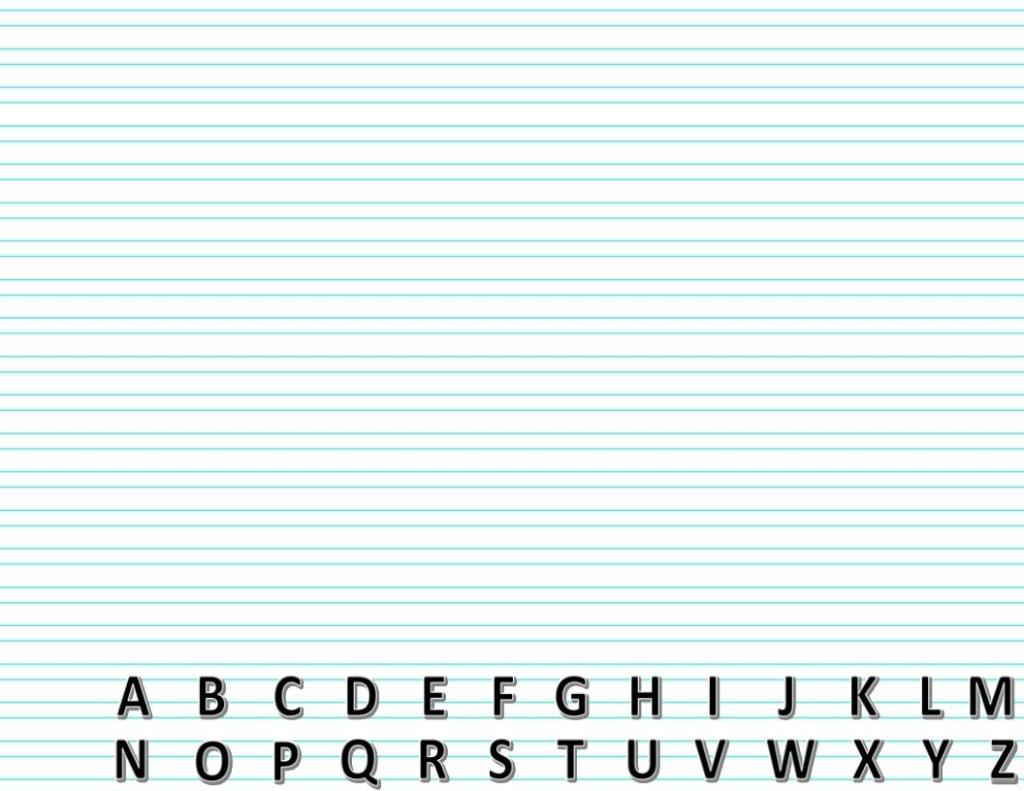When I returned to the USA and started working with middle school students who, due to limited or interrupted education, were struggling with literacy in English, I increased my use of hands-on activities. Many of my students were coming to me with first languages that were not based on the Latin alphabet, most had script or symbol-based first languages. Most couldn’t read or write in their first language, and neither could their parents. They were struggling with new skills, a new language, and a new alphabet. Hands-on activities were a requirement, and I tried as many as I could find. I was pleasantly surprised when magnetic spelling became a hit with my middle schoolers, and then later my adult learners as well.
I was so convinced that magnetic spelling wouldn’t be a hit with my older learners that I didn’t even buy magnetic letters at first, I borrowed them from the kindergarten teacher. Then we tried it and the students enjoyed it. Later we did another vocabulary lesson, this time without magnetic spelling, and the students asked about it. When the students asked about doing magnetic spelling during yet another vocabulary unit, and then another, I knew it was time to bring it back, permanently this time.
Magnetic spelling is really a very simple activity. All you need are some magnetic letters (as you can see in the picture, mine are a mixture of capital and lower case, but it really doesn’t matter), a metal object to place them on (I use cookie sheets from the dollar store), and some way to communicate the words you want students to spell (I give them a strip with pictures and/or definitions of the terms). Pass out your materials and let the students go to work. Since we always have more words than I can fit on a single strip, students will spell their words, raise their hands (and probably call out “Miss!” or “Teacher!”), I quickly look over the spellings, and if correct take the first strip and give them the second. Once they’ve finished all of their words I recruit them to help me check the work of other students.
This activity is now a standard part of all of my vocabulary units and I automatically create magnet spelling strips to go along with all of our other vocabulary activities. My older students all enjoy digging through the boxes of letters and chatting with one another as they work. Since I have multilingual classes it provides students with the opportunity to practice speaking in English in a very low pressure environment. The use of the magnet letters also provides students who are new to the English alphabet, especially those whose first languages have a very different alphabet, the opportunity to practice distinguishing between similar letters such as U-V-W, B-D, o-a, and E-F. I’ve also been impressed by their creative problem solving skills, such as turning a W upside-down to make an M or using a lower case L in place of an uppercase I.
Covid restrictions and regulations might have made this activity impossible (even if we could have met in person, sharing the magnets would not have been allowed), but I created a simple digital version of it instead. It doesn’t produce quite the same interaction and results as the physical activity, but it does get the job done. You can get your own free digital “magnetic” spelling template using the links here in the text, or by clicking the picture above. Make copies of the slide, add your pictures or definitions, share it with students, and you’re ready to go. The letters are “infinite” piles of 20 (later this summer I’ll do a blog post that explains how to make “infinite” piles) that students can drag and drop onto the slide to spell the words.
If you’re interested in how this fits into my overall vocabulary units, you can read about all of the various activities in the blog post Vocabulary Activities, or you can get the ESL Vocabulary Practice Bundle that covers many different topics. Also available are the Phonics Based Vocabulary Acquisition Units that I developed and was using when I first tried out magnetic spelling (freshly updated this past winter). I know this seems like a strange activity for middle, high school, and adult learners, I was surprised at their interest as well, but it really is one of the more popular vocabulary activities we do. Happy teaching, everyone!


